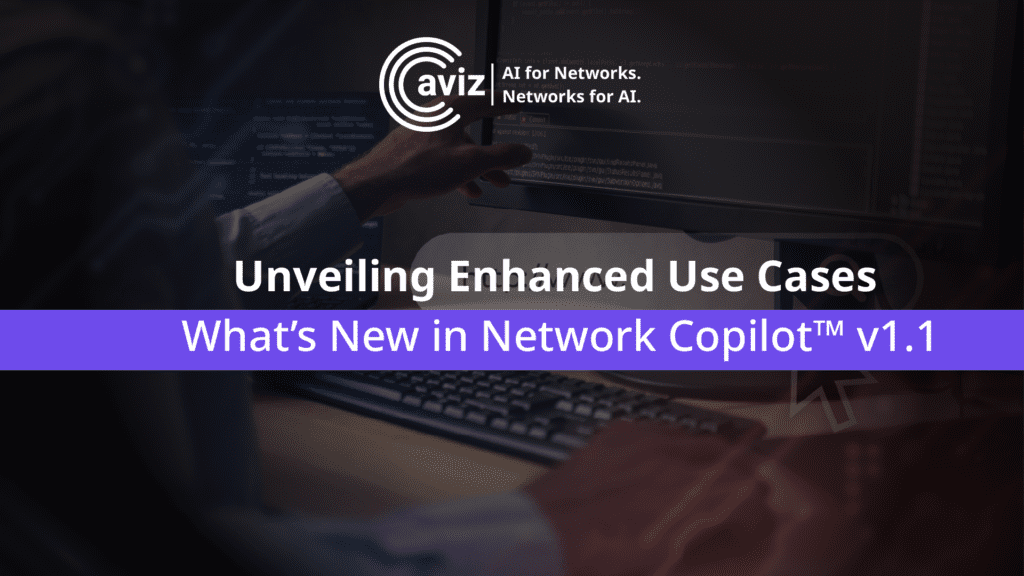A multi-vendor network strategy is a forward-thinking approach that enables organizations to harness the full potential of SONiC. It revolves around the adoption of SONiC as a common NOS while deploying hardware sourced from multiple vendors within the same infrastructure. One of its key advantages is the flexibility; organizations can select the best-suited hardware to meet specific requirements without being constrained by a single-vendor solution. Additionally, the strategy encourages healthy competition among vendors, leading to better pricing, feature innovation, and support options.
While a multi-vendor network strategy brings a multitude of benefits to organizations seeking consistency and efficiency in their network deployments, it also entails normalization of SONiC, its operational data, tools, and processes to ensure a unified and standardized environment is available for administrators and operators. In this blog, we will define and elaborate on why and how to normalize SONiC across diverse hardware platforms and foster interoperability to achieve greater flexibility and agility in your network infrastructure.
Why Normalize SONiC for Multi-Vendor Networks: Overcoming Challenges and Maximizing Benefits
Today, every forward looking networking team, regardless of their size, is looking to increase the capacity and performance of their network infrastructure. Everyone wants to embrace the latest advancements in ASIC functionalities, and deploy the latest hardware and software that allows them to scale and control their infrastructure on their own terms. But relying on a single vendor for hardware can lead to lock-in, where a company becomes overly dependent on that vendor’s products, services, and ecosystems.
While there are clear advantages to avoiding dependence on a single hardware vendor, it’s also important to note that managing multi-vendor deployments can bring its own set of challenges, such as increased complexity in network management, integration, and support. SONiC brings the layer that creates the balance between the benefits of vendor diversification with the operational challenges of a multi-vendor network strategy. But, even SONiC presents several challenges:
- Management Complexity: Vendors typically have their own versions, configurations, management tools, and interfaces for SONiC. This heterogeneity complicates infrastructure management and monitoring.
- Compatibility Risks: As each vendor updates their version of SONiC, there is increased risk of introducing compatibility issues with other components in the overall network.
- Integration Hurdles: The variance in SONiC versions from each vendor often leads to integration issues resulting from configuration/telemetry inconsistencies across platforms.
- Support Variability: Different vendors offer varying levels of support, both in terms of quality and responsiveness, this can make troubleshooting issues more complicated.
- Training Demands: Operators might need training for vendor specific hardware and software nuances, which can lead to longer onboarding times.
Hence, for consistent behavior and operability of using SONiC across different hardware platforms, normalization is essential. Normalization brings:
- Single Quality Standards & Consistent Visibility: To ensure that the OS provides consistent behavior and features regardless of the underlying hardware, and operational metrics are consistent across different platforms.
- Ease of Deployment: To ensure operators can expect similar configurations, behaviors, and deployment processes across different hardware.
- Standardized Troubleshooting: To ensure the environment emits consistent logs and alerts regardless of the hardware it runs on.
- Common Training & Documentation: To ensure network professionals have access to common and consistent resources and behaviors don’t vary based on the underlying hardware.
- Community Collaboration: To ensure that effective collaboration can occur between the users, the vendors, and the open-source SONiC community.
In essence, normalization of SONiC ensures that its benefits are fully realized without introducing unnecessary complexities and inconsistencies in the network operations. More importantly, normalization reinforces that the NOS layer doesn’t lean too heavily towards any particular hardware vendor’s idiosyncrasies.
Achieving SONiC Consistency: Best Practices for Multi-Vendor Networks
Achieving consistency and interoperability with SONiC across multiple hardware platforms requires a combination of best practices, rigorous testing, purpose-built tools, and unified support, together referred to as normalization of SONiC. Here are some steps, considerations, and recommendations to ensure a unified experience for multi-vendor SONiC deployments, and to help maximize the TCO savings from adopting SONiC.
- Comprehensive SONiC Evaluation
Evaluating SONiC requires a comprehensive approach that considers both its technical capabilities and viability within your network infrastructure. Each organization has their own requirements for routing protocols, throughput, latency, reliability, telemetry, etc., including costs. You should start with creating a list of requirements that meets your network’s demands, and then look for options that fit your bill. Many organizations prefer POCs for such evaluations, but POCs can be expensive and time consuming, especially when they entail procurement of multiple hardware from different vendors.
At Aviz, we identified this problem, and created what we call the Open Networking Experience Center for SONiC (ONE Center). ONE Center is a lab environment designed to showcase the capabilities of SONiC across a wide range of hardware. It gives you hands-on experience with SONiC and an avenue for doing SONiC evaluations.
In real-world scenarios without upfront investment into hardware. Aviz even provides SONiC Test reports specific to your evaluation criterias highlighting viable choices of Switches that may meet your needs. - Rigorous Testing of SONiC Builds
Contrary to popular belief, the community SONiC may not be the right choice for your organization. While the community version provides all the necessary baseline features, oftentimes your exact feature requirements can only be met by vendor specific distros. This is very typical of any open-source software as the overall progress of the community hinges upon the contributions from community members and vendors alike.
Hence, it is important to identify what version will work for you, but it is even more important to perform rigorous testing before and after deployment. We recommend testing SONiC builds for functionality, performance, and scalability across your selected platforms, specifically for the use cases pertaining to you. At Aviz, we have developed a test suite to ensure that quality standards for SONiC meet the expectations of our customers.
Our Fabric Test Automation Suite (FTAS) is designed to verify SONiC for Data Center and Edge deployment readiness. Moreover, FTAS is a fully automated CI/CD based solution ready to plug into existing network infrastructures for pre, and post deployment testing scenarios. We have helped multiple customers in establishing a vendor-agnostic unified SONiC build pipeline that can be rigorously tested before and after deployment. In some cases, we even manage the customer GitHub repositories that host the builds normalized for our customer use cases. - Unified Configuration Management
Deploying SONiC in multi-vendor environments makes it critical to have a unified configuration management system that ensures network administrators can seamlessly deploy, modify, and maintain their configurations across multiple hardware platforms.
Leveraging tools like YANG models, organizations can standardize SONiC configurations and data structures, presenting a consistent interface to their teams. Furthermore, a unified approach helps in streamlining troubleshooting and auditing activities, eliminating inconsistencies that might arise from platform-specific configurations.
At Aviz, we have taken it one step further by developing a unified SONiC Fabric Manager, a part of our Open Networking Enterprise Suite (ONES) solution, which can help orchestrate and configure multi-vendor SONiC networks with ease.
ONES can create, configure various topology configurations for Leaf, Spine, and Super-spine layers, apply them, and validate them on your entire fabric automatically. It even allows you to compare running configs against your applied configs. Additionally, ONES boasts features such as ZTP that can help upgrade your switches with custom SONiC images, something that is extremely critical for keeping your SONiC versions up-to-date. - Standardized SONiC APIs for Integration
While the Switch Abstraction Interface (SAI) at the core of SONiC is designed to ensure a consistent API layer across various ASIC vendors and the NOS, unfortunately, the platform components that make up the switch, bring their own nuances, leading to inconsistencies that often introduce complexities in integrating SONiC with various NetOps tools.
Standardized APIs across SONiC versions play a pivotal role in ensuring streamlined NetOps integration to deliver management agility, automation, and unified analytics. Standardizing APIs across a diverse range of hardware platforms with multiple variants of SONiC running on them can be extremely tedious, and hence a deterrent to your integration requirements. This is another area where we have put in a lot of effort to deliver Standardized APIs for nearly every variant of SONiC to our customers.
Our ONES platform has built-in REST APIs for both Day 1 and Day 2 operations. These REST APIs can easily be integrated with your NetOps tools, eliminating the need for you to invest your time and resources into Standardizing APIs for your SONiC operations. - Unified Monitoring System Across Platforms for SONiC Deployments
As organizations move towards adopting open-source SONiC over proprietary networking solutions, the one thing that everyone seeks is a single-pane-of-glass for monitoring their multi-vendor infrastructure. Everyone expects a Cisco/Arista grade experience not only because of the ease of use they brought, but also because no one wants the added complexity of using multiple systems for each of their vendor specific components.
In an environment where SONiC operates across various hardware vendors, the potential for disparate monitoring tools and fragmented visibility is high. A cohesive visibility across all hardware components simplifies monitoring, troubleshooting, and promotes proactive network management.
Aviz ONES offers administrators a unified, comprehensive view of their entire SONiC network landscape. It streamlines workflows, eliminating the need to juggle multiple vendor-specific tools, maximizing operational efficiency. In essence, a single-pane-of-glass approach maximizes and ensures consistent, high-quality network performance across diverse SONiC deployments.

- Common Support Channel Across Vendors (NVIDIA, Cisco, Edgecore, Marvel…)
No one wants to deal with multiple support channels for their infrastructure. The decision to go multi-vendor SONiC brings the critical challenge of having to deal with multiple support teams, ticketing tools, processes, timelines, SLAs, and more. In the world of SONiC, where hardware from various vendors coexist, the ability to receive consistent, reliable, and comprehensive support across all vendors is of paramount importance. A unified support ensures that network administrators have a single channel to raise issues, or seek guidance regardless of who is the supplier of their hardware.
At Aviz, we have created that unified support channel for SONiC by working tirelessly with our customers for years and collaborating with nearly every major ASIC and Switch vendor in the industry. Our team of SONiC experts guarantees that the nuances and idiosyncrasies of each vendor’s platform is well-understood and addressed timely for our customers.
We are proud to have partnered with the likes of Broadcom, Celestica, Cisco, Edgecore, Marvell, Micas, Nvidia, Supermicro, Wistron, and many more to deliver the much needed unified support for the SONiC ecosystem.
In most cases, our global teams, available 24×7, are able to meet SLAs as low as 30 minutes, since our contracts with hardware vendors have enabled us to provide a seamless experience. Additionally, with all the experience and expertise we have amassed over the years, we have been able to automate the SONiC troubleshooting via our carefully crafted runbooks that are normalized across multiple platforms.
Conclusion
As organizations embrace SONiC for their multi-vendor networks, achieving consistency becomes paramount. To ensure seamless migration to, and interoperability with SONiC:
- Conduct a comprehensive end-to-end evaluation of hardware options tailored to your needs
- Choose the right SONiC distributions, and ensure rigorous testing is performed
- Utilize a unified configuration management system to streamline deployments
- Utilize standardized APIs to facilitate efficient NetOps integrations
- Utilize unified monitoring solutions for multi-vendor SONiC management
- Identify a centralized support partner that can collaborate with all hardware vendors
Adopting these strategies will maximize the benefits of multi-vendor SONiC deployments.
Contact us today, how we can support your networking needs




